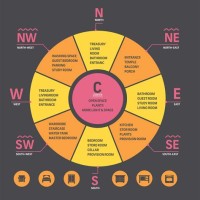As a civil engineer, you may have asked yourself if there’s a way to switch to a career in interior design. The short answer is yes—it is possible to transition from a career in civil engineering to one in interior design. While the two disciplines sound like they couldn’t be further apart, both involve problem-solving, creativity, and an eye for detail. Interior designers should have a knack for planning, organizing, and visualizing space, as well as a good understanding of the technical aspects of architecture and construction. This article will explore the steps you need to take to become an interior designer after civil engineering.
With a background in civil engineering, you may already have some of the skills and knowledge needed to transition into interior design. You might have experience in design and construction, which can help you when creating interior designs. You will also have an understanding of structural elements, such as walls, beams, columns, and foundations, which are essential for designing interiors. Additionally, you may know about building codes, zoning regulations, and other technical aspects of construction that are important for becoming an interior designer.
The first step in transitioning to an interior design career is to research the field. Explore the courses and qualifications needed to become a professional interior designer. Read up on the latest trends in the industry and familiarize yourself with the different styles of interior design. You should also study the codes and regulations related to interior design, including building codes and zoning laws. Additionally, you should network with professionals in the field and join organizations such as the American Society of Interior Designers.
Once you have gained a broad understanding of the profession, it’s time to start developing your portfolio. As an aspiring interior designer, you will need to create a portfolio that showcases your skills and talents. Your portfolio should include drawings of various rooms, along with photos of interiors you have designed or worked on. You should also include a few written works, such as project descriptions, to demonstrate your writing skills.
Your portfolio should be tailored to the types of projects you want to work on. For example, if you are interested in residential design, you should focus on creating portfolio pieces that showcase your skills in this area. If you are interested in commercial design, you should focus on projects that demonstrate your ability to create functional and aesthetically pleasing spaces.
Once you have developed your portfolio, it’s time to start applying for internships and jobs. When searching for positions, consider looking at smaller design firms that may be open to hiring someone with a background in civil engineering. Furthermore, many interior design firms will offer internships to aspiring interior designers, which can provide excellent opportunities to gain experience and build connections in the field.
When applying for jobs, it is important to emphasize your transferable skills. Show potential employers that your experience in civil engineering has prepared you to take on the challenges of interior design. Explain how your technical knowledge and problem-solving skills can be applied to the field of interior design. Additionally, be sure to highlight your creativity and passion for the profession.
Finally, don’t forget to keep learning. The interior design field is ever-evolving, and staying up to date on new trends and techniques can help you stay competitive. Attend seminars and workshops, read design magazines, and follow blogs and social media accounts related to interior design. Additionally, consider earning certifications or taking classes to further your knowledge and skills.
By following these steps, you can transition from a career in civil engineering to one in interior design. With the right qualifications, portfolio, and experience, you can become a successful interior designer.

10 Most Important Questions On Interior Design In India Answered

Civil Engineering Terminology Learn Construction Technical Terms

Difference Between Interior Design And Architecture Dengarden
Bachelor Of Interior Design He20501v03 Tafe Nsw
How To Become A Civil Engineer

Architects Vs Civil Engineers Key Differences Cadd Centre

Certified Interior Design Minnesota Board Of Architecture Engineering Land Surveying Landscape Geoscience And

10 Essential Tools For Interior Designers To Use Everyday Foyr

Civil Engineering Vs Interior Design What S The Difference My Palace

A Comprehensive Guide To Civil Engineering And Interior Design

Civil Engineering Market Size Growth Report 2030
:max_bytes(150000):strip_icc()/Buildingdesigns-GettyImages-912482942-db55b3af711044a3a42ad1040c6711a9.jpg?strip=all)
How To Be A Certified Professional Home Designer

Can A Civil Engineer Become An Interior Designer Inspired Homes

Courses For Civil Engineering Which Ones Should You Take

Online Associate Degrees In Civil Engineering

How To Become An Interior Designer

7 Interior Designer Resume Examples Guide For 2024

Department Of Civil Engineering Home Page Karunya Institute Technology And Sciences Naac A Accredited Best University

10 Reasons You Need A Structural Engineer






